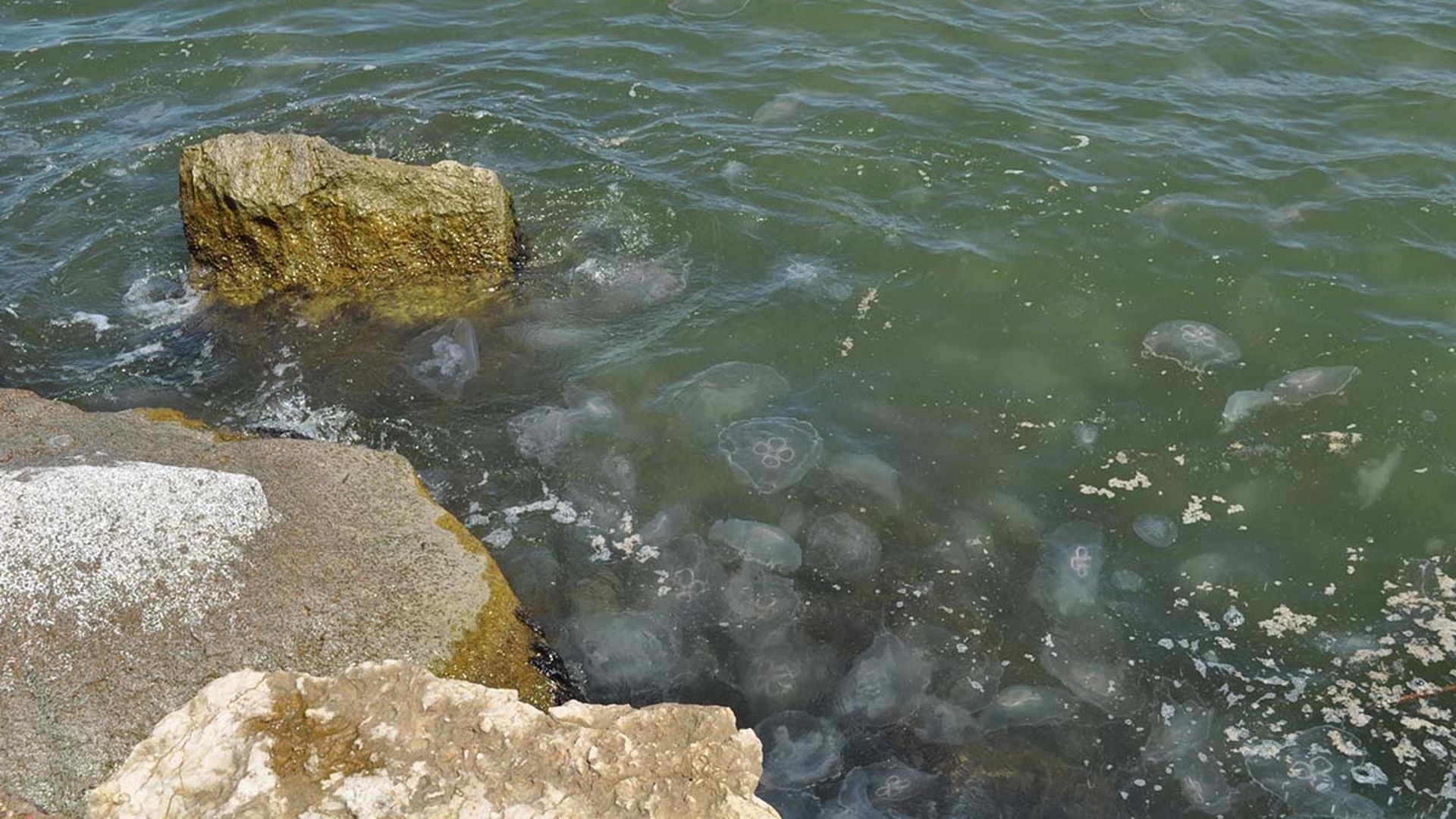GALVESTON, Texas — If you've been to Galveston, Bolivar or any other Texas beach lately, you may have noticed a bunch of jellyfish floating in the water.
"Jellyfish as far as the eye can see! That is absolute insanity!" Captain Sharkey Marquez with Out Cast Charters in Galveston said.
In fact, thousands of moon jellies have washed ashore on Texas beaches in recent weeks. The bumper crop along the Texas Coast likely came from the storm surge of Hurricane Francine.
The moon jellies are fascinating creatures that are popular in aquariums and zoos, including the Houston Zoo.
"They don't have a brain. They don't have a heart. They don't have any kind of blood," explained Jace Tunnell with the Harte Research Institute of Gulf Coast studies.
Tunnell spotted hundreds of moon jellies in Port Aransas over the weekend. He knows first-hand that their stings are relatively mild after intentionally stinging himself as part of his research.
"I knew they don't sting that bad so if I had to do a scale from 1 to 10, I'd say a one, maybe a two," Tunnell told us.
More fun facts about moon jellyfish
- When food is limited, moon jellies can shrink to one-tenth of their size to save energy. They return to their original size when more food becomes available.
- They feed on tiny shrimp and other crustaceans.
- Their main predator is the sea turtle.
- The bell of a moon jelly can be up to 12 inches wide, about the size of a dinner plate.
- They're 95% water, according to the Houston Zoo.

